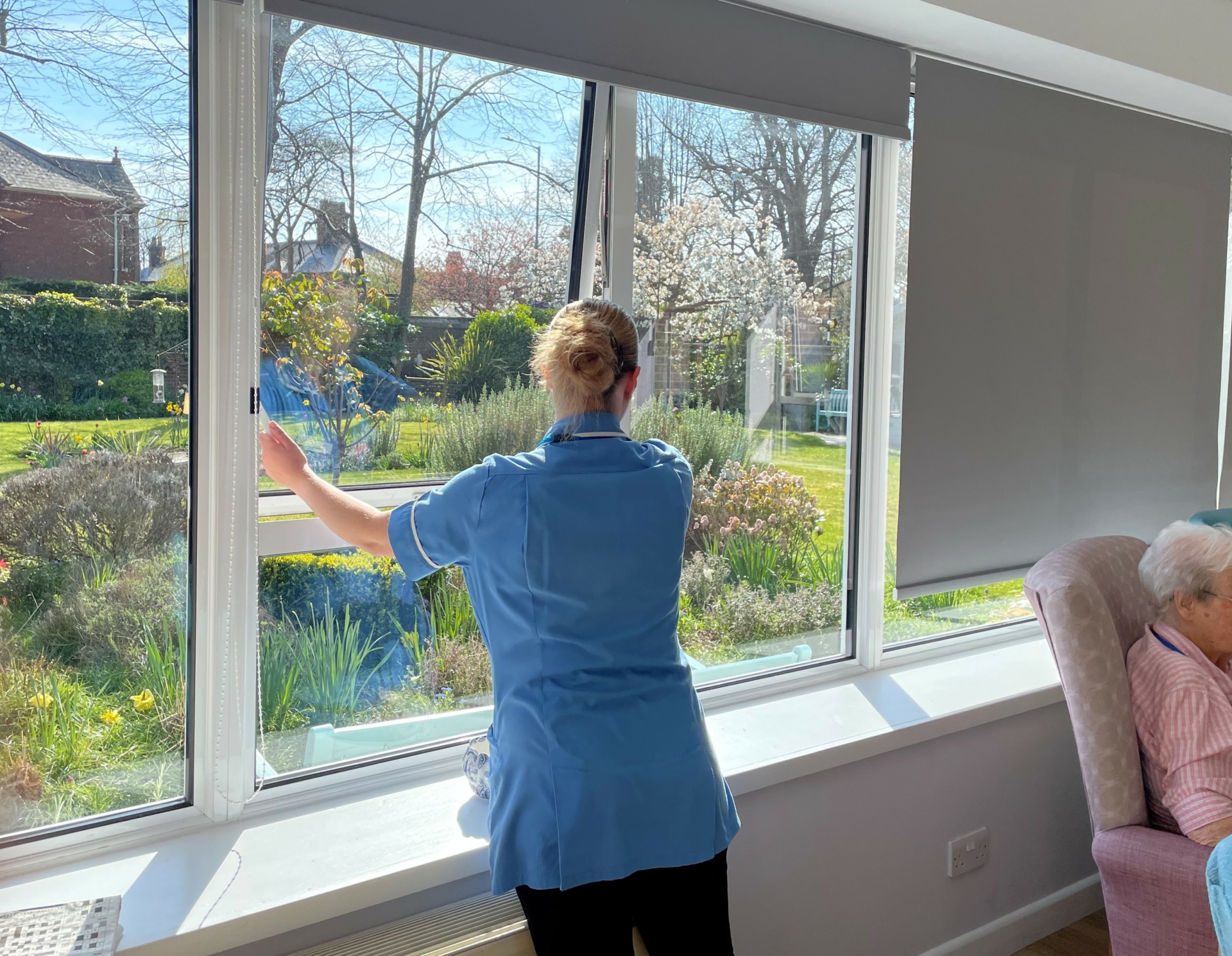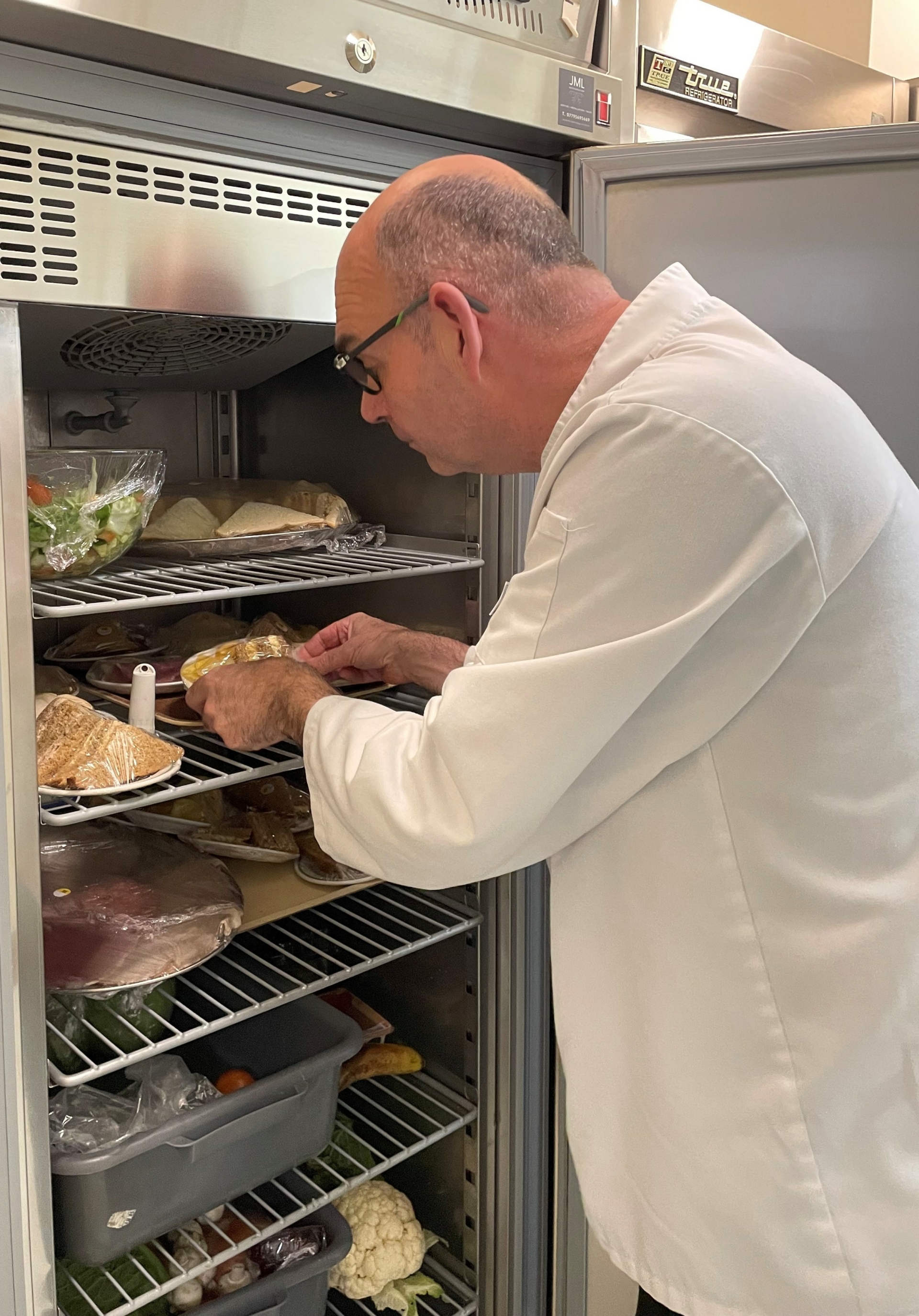Background
In the heart of Norwich, Corton House has long maintained its reputation as a quality care home, most recently rated “Outstanding” by a Mock Inspector in July 2024. Recently, Corton House took part in a pilot project organised by the Norfolk Care Association, aiming to explore the benefits of monitoring solutions for indoor air quality (IAQ), energy use, and regulatory compliance.
Through this initiative, Corton House trialed the Aranet monitoring system, a wireless sensor-based platform designed to support smarter, more efficient operations in care environments.

Why Indoor Air Quality Matters
According to the Norfolk Care Association, improving indoor air quality is critical in care settings:
“Poor indoor air quality can worsen respiratory issues like asthma and bronchitis and make residents more vulnerable to infections due to compromised immune systems,”
explains Raj Sehgal, Director of Norfolk Care Association and CEO of ArmsCare Ltd.
“Beyond physical health, better air quality contributes to fewer hospital visits, lower medical costs, and ultimately, a more comfortable and dignified life for our most vulnerable residents.”
Balancing a warm indoor environment with proper ventilation is one of many challenges care homes face. Traditional methods, like opening windows, can lead to heat loss, making elderly residents uncomfortable. That’s where smart, unobtrusive monitoring systems like Aranet step in.

Corton House’s Motivation
Unlike some settings where technology is introduced to solve specific operational problems, Corton House approached the pilot with curiosity and a mindset of continuous improvement:
“We didn’t have any urgent challenges,” says Tom Greenhill, General Manager of Corton House. “We joined the pilot out of a desire to better understand the property and our energy consumption.”
This openness to innovation, combined with Corton House’s existing familiarity with digital systems, made it an ideal site for the trial.
The Aranet system was installed at Corton House to track:
- CO₂ levels – Indicating air quality and ventilation effectiveness.
- Indoor temperature – Ensuring a comfortable environment for residents.
- Refrigeration temperatures – Maintaining compliance for food and medication storage.
The installation was quick and required minimal adjustments, allowing for integration into daily operations.
One standout success? Preventing food waste:
“There have been at least 3 or 4 occasions in the last year where sensor alarms helped us avoid the loss of an entire fridge or freezer’s worth of food,” says Tom Greenhill. “These incidents would have disrupted meal service and carried financial and operational costs.”

Though energy efficiency wasn’t the primary focus, the sensors are now part of daily operations, especially in terms of compliance and resident comfort:
- Temperature Monitoring: Ensuring rooms stay within optimal ranges for resident well-being.
- Air Quality During Outbreaks: Real-time CO₂ data helps manage ventilation and minimize infection risk.
- Refrigerator Monitoring: Continuous, automated logs of medication and food storage temperatures boost regulatory confidence.
“Having 24/7 data gives us 100% confidence that storage has remained within regulatory parameters,” says Tom. “This has been the most important and significant benefit of the system.”
Scalability Across Norfolk
For the Norfolk Care Association, Corton House’s experience serves as an example of what’s possible—even in financially constrained environments:
“There’s no one-size-fits-all solution,”
they acknowledged.
“But this case study helps other care homes understand the outcomes of the pilot and make informed decisions based on evidenced experience.”
Still, widespread adoption hinges on the availability of funding and a willingness to embrace digital transformation. For those considering smart IAQ monitoring, Christine Futter MBE, Director of Norfolk Care Association offers this advice:
“Recognise the health and cost benefits but also consider the available space for installation to ensure the monitoring equipment remains unobtrusive in residents’ personal spaces, while maintaining an effective and discreet setup. With the right approach, solutions like Aranet can be integrated seamlessly and without disruption.”
Looking Ahead
Though the trial was not tied to an immediate operational crisis, the long-term potential is clear. From temperature control and compliance to food safety and outbreak readiness, Aranet’s system has quietly embedded itself into the daily rhythm of Corton House.
“With time and expertise, I believe there are real possibilities for improving energy use and ventilation,”
Tom Greenhill concluded.
Conclusion
The Corton House pilot is more than a local success—it’s a blueprint for smarter care across Norfolk. As care providers navigate tight budgets, growing regulatory demands, and a population with increasingly complex health needs, data-driven tools like Aranet offer clarity, confidence, and peace of mind.
“This project shows how even small steps in monitoring can create meaningful improvements in care home operations,”
says Martins Pavasars, HVAC Business Development Manager at Aranet.
“By focusing on comfort, compliance, and quality of life, care homes like Corton House are leading the way in creating healthier environments for both residents and staff.”











